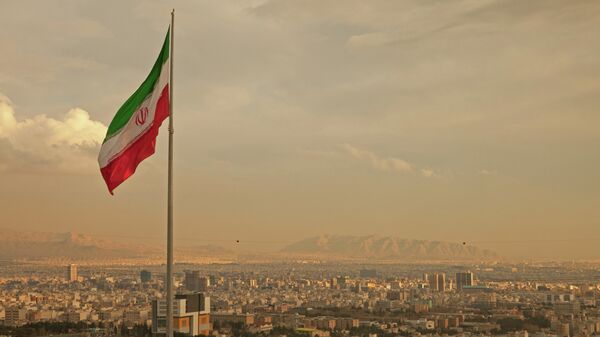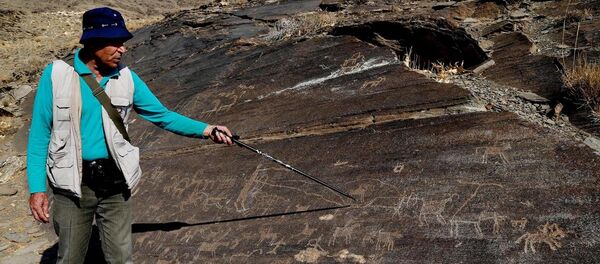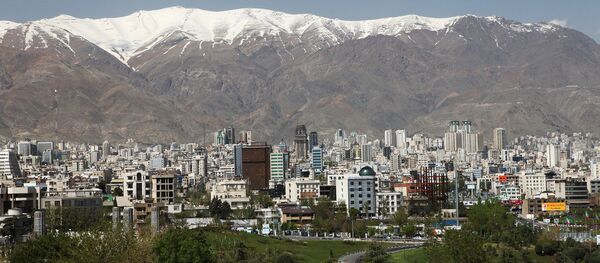Iran's nuclear energy program started in the mid-1950s under the Shah Mohammad Reza Pahlavi after the founding of the Tehran University Nuclear Center. Iran began to develop its nuclear energy industry with the United States in accordance with a civil nuclear cooperation agreement signed as part of the US Atoms for Peace program in 1957. Under this treaty, Washington agreed to deliver nuclear plants and equipment to Iran, as well as training personnel.
In 1958, Iran became a member of the International Atomic Energy Agency (IAEA). In 1963, Iran signed the Treaty Banning Nuclear Weapon Tests in the Atmosphere, in Outer Space and Under Water, and the Nuclear Non-Proliferation Treaty (NPT), which came into effect on February 2, 1970.
In 1973, Iran started to implement a peaceful nuclear energy program. Initially, it had the goal of building 23 nuclear power plants to produce atomic energy. In 1974, the Atomic Energy Organization of Iran was founded (AEOI). Its main purpose was to sign contracts with foreign companies exporting nuclear energy technology.
From 1967 to 1977, the United States, as well as Belgium, France, West Germany, Italy and Britain actively participated in the development of a nuclear energy program in Iran, which led to the signing of a number of contracts to supply fuel to future nuclear power plants, train personnel and other forms of cooperation, including the construction of two nuclear power plants in Bushehr and Ahvaz. According to the plan developed in conjunction with the cooperating countries, the implementation of Iran's nuclear power program and diversification of its sources of power supply were expected to be completed in 1994.
In the early 1990s, Iran resumed its nuclear program. Russia and China became the main sources of know-how and technology for Iran's nuclear sector. In 1992, Iran signed a protocol on cooperation in the atomic energy sphere with China and the treaty On the Use of Nuclear Energy for Peaceful Purposes with Russia. In August 1992, Russia and Iran signed an agreement on the construction of a nuclear power plant in Busher. In 1997, China refused to continue to cooperate with Iran in the sphere of the peaceful use of nuclear energy due to an agreement with the United States.
In 2002, the Iraq-based National Council of Resistance of Iran (NCRI) published information stating that Iran had constructed an uranium enrichment plant in Natanz and a plant for the production of heavy water in Arak, which were not declared to the IAEA experts who visited Iran in 2003 and confirmed that the country had made a significant breakthrough in the creation of a nuclear fuel cycle.
In September 2003, IAEA experts detected traces of highly-enriched uranium at two Iranian nuclear facilities, although no military element of the Iranian nuclear program was confirmed.
According to a law enacted in 2005 by the Iranian parliament, the government of Iran is obligated to develop a full nuclear fuel cycle, provide for the generation of 20,000 megawatts of power in the country and build 20 nuclear generating units.
Possible military dimension to the Iranian nuclear program sparked concern among the international community. In 2003, Germany, France and the United Kingdom started talks with Iran on its nuclear program. In 2006, China, Russia and the United States joined the talks. The so-called P5+1 group of international negotiators were trying to persuade Iran to stop enriching uranium for over 10 years.
On April 11, 2006, Gholam Reza Aghazadeh, the head of the Atomic Energy Organization of Iran and vice-president of Iran for Atomic Energy, said in a live broadcast that on April 9, 2006, Iranian scientists at the nuclear facility in Natanz were able to enrich uranium to 3.5% uranium-235 on the first cascade of the centrifuges. In other words, they were able to produce low-enriched uranium, needed for producing fuel for nuclear power plants.
On April 9, 2007, on National Nuclear Technology Day, Iran officially announced the start of industrial-scale uranium enrichment.
In late September 2009, Iran informed the IAEA of the construction of a second uranium enrichment facility in Qom. According to an IAEA report, the nuclear watchdog had information that the project was started in 2002, frozen in 2004 and resumed in 2006.
In November 2009, it was announced that the government of Iran sanctioned the construction of another 10 uranium enrichment facilities, five of which it intended to start building immediately.
A confidential report by IAEA Director General Mohamed ElBaradei to the IAEA Board of Governors stated that as of November 2, 2009, almost 4,000 centrifuges were operational in Iran and another 4,700 were being installed. The report stated that according to data from an IAEA inspection, as of November 17, 2008, from the start of operations in February 2007, 9,956 kilograms of UF6 (uranium hexafluoride) was fed into the cascades and 839 kilograms of low-enriched UF6 was produced.
Previously, Ali Akbar Salehi, the head of the Atomic Energy Organization of Iran, said the country had created a new generation of uranium enrichment centrifuges — a cascade of 10 centrifuges, which were undergoing mandatory testing.
In July 2015, Iran and six international intermediaries reached the Joint Comprehensive Plan of Action (JCPOA) aimed at guaranteeing the peaceful nature of the Iranian nuclear program. Multiple deadlines were missed in 2015 as Iran and the six world powers sought to overcome their differences and find a means to limit Iran’s nuclear activities
Under the new deal, Tehran has agreed to keep the level of its uranium enrichment under 3.67 percent for a period of 15 years and to keep its uranium stockpile under 300 kilograms. The country also vowed not to produce weapons grade plutonium at its Arak facility and not to build new heavy water reactors for 15 years. The agreement guarantees the peaceful nature of Iran's nuclear program in exchange for sanctions relief.
On January 16, 2016, the International Atomic Energy Agency verified Tehran’s compliance with the JCPOA, opening way for Iran's return to the international oil market. The same day, the United States and the European Union announced that they were lifting their sanctions against Iran.









